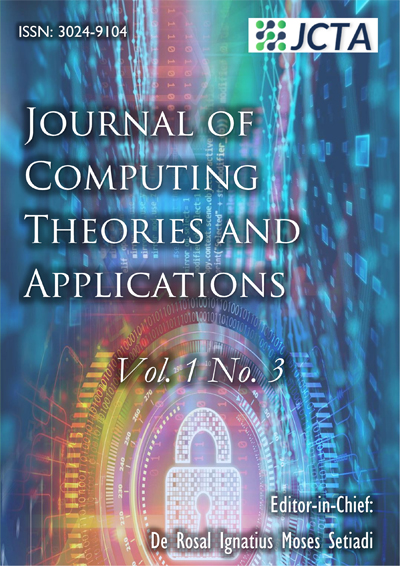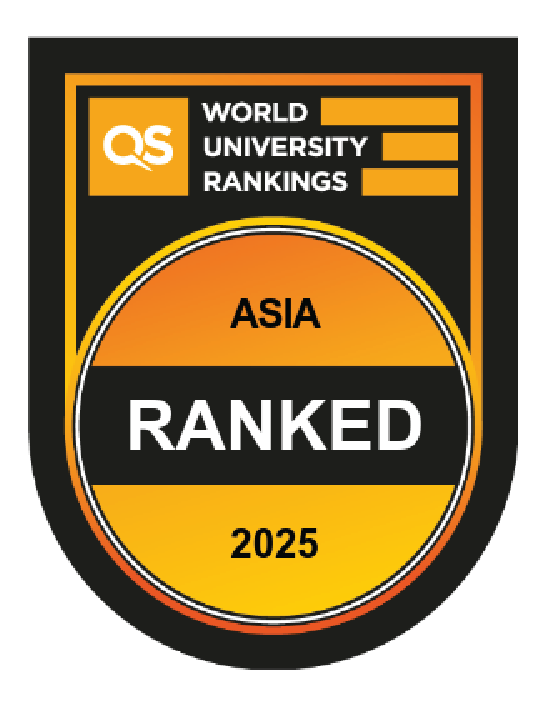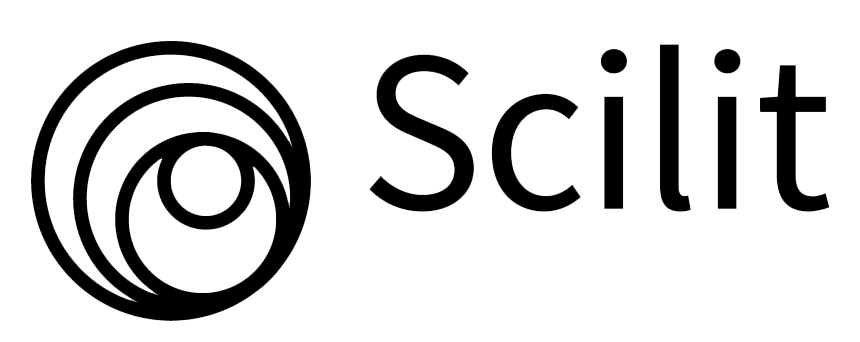Music-Genre Classification using Bidirectional Long Short-Term Memory and Mel-Frequency Cepstral Coefficients
DOI:
https://doi.org/10.62411/jcta.9655Keywords:
Music genre classification, Music recommendation, Music suggestion, Song classification, Song recommendationAbstract
Music genre classification is one part of the music recommendation process, which is a challenging job. This research proposes the classification of music genres using Bidirectional Long Short-Term Memory (BiLSTM) and Mel-Frequency Cepstral Coefficients (MFCC) extraction features. This method was tested on the GTZAN and ISMIR2004 datasets, specifically on the IS-MIR2004 dataset, a duration cutting operation was carried out, which was only taken from seconds 31 to 60 so that it had the same duration as GTZAN, namely 30 seconds. Preprocessing operations by removing silent parts and stretching are also performed at the preprocessing stage to obtain normalized input. Based on the test results, the performance of the proposed method is able to produce accuracy on testing data of 93.10% for GTZAN and 93.69% for the ISMIR2004 dataset.References
G. Marie, “Number of Spotify monthly active users (MAUs) worldwide from 1st quarter 2015 to 3rd quarter 2023tle,” 2023.
J.-W. Chang et al., “Music recommender using deep embedding-based features and behavior-based reinforcement learning,” Multimed. Tools Appl., vol. 80, no. 26–27, pp. 34037–34064, Nov. 2021, doi: 10.1007/s11042-019-08356-9.
R. Brisson and R. Bianchi, “On the relevance of music genre-based analysis in research on musical tastes,” Psychol. Music, vol. 48, no. 6, pp. 777–794, Nov. 2020, doi: 10.1177/0305735619828810.
Y. Liang and M. C. Willemsen, “Personalized Recommendations for Music Genre Exploration,” in Proceedings of the 27th ACM Con-ference on User Modeling, Adaptation and Personalization, Jun. 2019, pp. 276–284. doi: 10.1145/3320435.3320455.
G. Sharma, K. Umapathy, and S. Krishnan, “Trends in audio signal feature extraction methods,” Appl. Acoust., vol. 158, p. 107020, 2020, doi: 10.1016/j.apacoust.2019.107020.
Y.-H. Cheng, P.-C. Chang, and C.-N. Kuo, “Convolutional Neural Networks Approach for Music Genre Classification,” in 2020 International Symposium on Computer, Consumer and Control (IS3C), Nov. 2020, pp. 399–403. doi: 10.1109/IS3C50286.2020.00109.
J. Ramírez and M. J. Flores, “Machine learning for music genre: multifaceted review and experimentation with audioset,” J. Intell. Inf. Syst., vol. 55, no. 3, pp. 469–499, Dec. 2020, doi: 10.1007/s10844-019-00582-9.
A. Parmar, R. Katariya, and V. Patel, “A Review on Random Forest: An Ensemble Classifier,” in Lecture Notes on Data Engineering and Communications Technologies, vol. 26, 2019, pp. 758–763. doi: 10.1007/978-3-030-03146-6_86.
S. Abirami and P. Chitra, “Energy-efficient edge based real-time healthcare support system,” in Advances in Computers, 1st ed., vol. 117, no. 1, Elsevier Inc., 2020, pp. 339–368. doi: 10.1016/bs.adcom.2019.09.007.
P. Cunningham and S. J. Delany, “k-Nearest Neighbour Classifiers - A Tutorial,” ACM Comput. Surv., vol. 54, no. 6, pp. 1–25, Jul. 2022, doi: 10.1145/3459665.
J. Cervantes, F. Garcia-Lamont, L. Rodríguez-Mazahua, and A. Lopez, “A comprehensive survey on support vector machine clas-sification: Applications, challenges and trends,” Neurocomputing, vol. 408, no. xxxx, pp. 189–215, Sep. 2020, doi: 10.1016/j.neucom.2019.10.118.
D. R. Ignatius Moses Setiadi et al., “Effect of Feature Selection on The Accuracy of Music Genre Classification using SVM Classi-fier,” in 2020 International Seminar on Application for Technology of Information and Communication (iSemantic), Sep. 2020, pp. 7–11. doi: 10.1109/iSemantic50169.2020.9234222.
D. R. Ignatius Moses Setiadi et al., “Comparison of SVM, KNN, and NB Classifier for Genre Music Classification based on Metadata,” in 2020 International Seminar on Application for Technology of Information and Communication (iSemantic), Sep. 2020, pp. 12–16. doi: 10.1109/iSemantic50169.2020.9234199.
R. C. Staudemeyer and E. R. Morris, “Understanding LSTM -- a tutorial into Long Short-Term Memory Recurrent Neural Net-works,” pp. 1–42, Sep. 2019.
L. Alzubaidi et al., “Review of deep learning: concepts, CNN architectures, challenges, applications, future directions,” J. Big Data, vol. 8, no. 1, p. 53, Mar. 2021, doi: 10.1186/s40537-021-00444-8.
N. Elsayed, A. S. Maida, and M. Bayoumi, “Gated Recurrent Neural Networks Empirical Utilization for Time Series Classification,” in 2019 International Conference on Internet of Things (iThings) and IEEE Green Computing and Communications (GreenCom) and IEEE Cyber, Physical and Social Computing (CPSCom) and IEEE Smart Data (SmartData), Jul. 2019, pp. 1207–1210. doi: 10.1109/iThings/GreenCom/CPSCom/SmartData.2019.00202.
M. Jakubec and M. Chmulik, “Automatic music genre recognition for in-car infotainment,” in Transportation Research Procedia, 2019, vol. 40, pp. 1364–1371. doi: 10.1016/j.trpro.2019.07.189.
S. Christin, É. Hervet, and N. Lecomte, “Applications for deep learning in ecology,” Methods Ecol. Evol., vol. 10, no. 10, pp. 1632–1644, Oct. 2019, doi: 10.1111/2041-210X.13256.
F. Medhat, D. Chesmore, and J. Robinson, “Masked Conditional Neural Networks for sound classification,” Appl. Soft Comput., vol. 90, p. 106073, May 2020, doi: 10.1016/j.asoc.2020.106073.
F. Karim, S. Majumdar, and H. Darabi, “Insights Into LSTM Fully Convolutional Networks for Time Series Classification,” IEEE Access, vol. 7, pp. 67718–67725, 2019, doi: 10.1109/ACCESS.2019.2916828.
D. Utebayeva, A. Almagambetov, M. Alduraibi, Y. Temirgaliyev, L. Ilipbayeva, and S. Marxuly, “Multi-label UAV sound classifica-tion using Stacked Bidirectional LSTM,” in 2020 Fourth IEEE International Conference on Robotic Computing (IRC), Nov. 2020, pp. 453–458. doi: 10.1109/IRC.2020.00086.
S. Deepak and B. G. Prasad, “Music Classification based on Genre using LSTM,” in 2020 Second International Conference on Inventive Research in Computing Applications (ICIRCA), Jul. 2020, pp. 985–991. doi: 10.1109/ICIRCA48905.2020.9182850.
H. Li, J. Li, X. Guan, B. Liang, Y. Lai, and X. Luo, “Research on Overfitting of Deep Learning,” in 2019 15th International Conference on Computational Intelligence and Security (CIS), Dec. 2019, pp. 78–81. doi: 10.1109/CIS.2019.00025.
Z. Wang, M. Yan, J. Chen, S. Liu, and D. Zhang, “Deep learning library testing via effective model generation,” in Proceedings of the 28th ACM Joint Meeting on European Software Engineering Conference and Symposium on the Foundations of Software Engi-neering, Nov. 2020, pp. 788–799. doi: 10.1145/3368089.3409761.
A. Elbir and N. Aydin, “Music genre classification and music recommendation by using deep learning,” Electron. Lett., vol. 56, no. 12, pp. 627–629, Jun. 2020, doi: 10.1049/el.2019.4202.
N. Pelchat and C. M. Gelowitz, “Neural Network Music Genre Classification,” Can. J. Electr. Comput. Eng., vol. 43, no. 3, pp. 170–173, 2020, doi: 10.1109/CJECE.2020.2970144.
B. Jaishankar, R. Anitha, F. Daniel Shadrach, M. Sivarathinabala, and V. Balamurugan, “Music Genre Classification Using African Buffalo Optimization,” Comput. Syst. Sci. Eng., vol. 44, no. 2, pp. 1823–1836, 2023, doi: 10.32604/csse.2023.022938.
Andrada, “GTZAN Dataset - Music Genre Classification,” kaggle, 2019.
P. Cano, N. Wack, and P. Herrera, “ISMIR04 Genre Identification task dataset (1.0) [Data set],” Zenodo, 2018.
T. Hidayat, M. H. Zakaria, and N. Che Pee, “Comparison of Lossless Compression Schemes for WAV Audio Data 16-Bit Between Huffman and Coding Arithmetic,” Int. J. Simul. Syst. Sci. Technol., vol. 19, no. 6, pp. 36.1-36.7, Feb. 2019, doi: 10.5013/IJSSST.a.19.06.36.
M. Ashraf et al., “A Hybrid CNN and RNN Variant Model for Music Classification,” Appl. Sci., vol. 13, no. 3, p. 1476, Jan. 2023, doi: 10.3390/app13031476.
Downloads
Published
How to Cite
Issue
Section
License
Copyright (c) 2024 Nantalira Niar Wijaya, De Rosal Ignatius Moses Setiadi

This work is licensed under a Creative Commons Attribution 4.0 International License.















